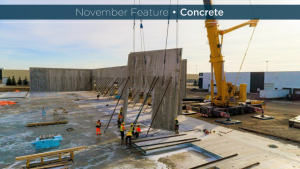High inflation and interest rates may be painful, but construction industry leaders should take the long view and read the demographic signs when mapping future growth.
Since late 2022, high inflation and interest rates have been a thorn in the side of nearly every executive in Canada’s construction industry. After all, higher building and borrowing costs are barriers to our success. They stifle consumer demand, slow down project timelines and reduce profitability. But what if we flip the script and instead, consider these temporary pain points as indicators of future growth?
As a risk management adviser who consults with developers, builders, trades and suppliers nationwide, I hear first-hand from clients about how cost and supply fluctuations and local economic conditions affect their operations.
Between regional differences in new housing demand, changing patterns in where consumers live, work and shop, and diverse approaches to building new versus retrofitting, each community faces unique and shifting construction needs.
Higher building costs may be critical to the bottom line, but they signal a broader underlying challenge that will shape our industry for decades to come: demographics.
Deciding what to build or tear down comes down to people and their behaviour
In Ontario, the provincial government’s decision to tear down Toronto’s Ontario Place and replace it with a new luxury spa sparked controversy. However, it highlights a broader dynamic at play in cities across the country.
When governments decide what to build and where, these decisions are largely driven by demographics: the size of each generational cohort, the life stage they’re in and their purchasing behaviours.
To date, no generation has left a larger footprint on Canada’s construction landscape than the baby boomers. Fifty or 60 years ago, serving this market meant meeting the building needs of families with young children. Now, as this cohort moves into retirement, it means building for a growing population of individuals with newfound leisure time and changing lifestyles.
Inflation and interest rates will normalize, but may not go back to historic lows
Economic experts agree today’s high interest rates are a temporary blip caused by the pandemic’s supply chain disruptions, and they’ve been masking a longer-term shift underway.
At their simplest level, interest rates are determined by borrowing demand: younger people tend to borrow, and older people tend to save.
Prior to late 2022, interest rates hadn’t been this high since the ‘70s and ‘80s, when baby boomers’ mortgages drove up demand for capital. Until very recently, this cohort’s accumulated wealth has helped to keep interest rates at historic lows.
But now, as boomers draw down their retirement savings and smaller, younger generations move through their accumulation years, there may be fewer savers and therefore lower supply in the coming decades.
In fact, economic forecasts anticipate that by 2033, interest rates will likely be higher compared to the recent historic lows — a key planning factor for new construction projects, raising capital and projecting investment returns.
The tricky part: demographic shifts aren’t always predictable
The current spike in demand for low-cost housing is challenging to address, largely because it’s difficult to assess whether the demand is real and ongoing, or temporary.
Just recently, new data from Statistics Canada revealed that for the first time, the number of millennials surpassed the baby boom generation, largely due to record increases in immigration. This increase in permanent and non-permanent residents is just one factor driving both demand and uncertainty.
In general, longer-term residents tend to move into the homebuyer pipeline while non-permanent residents are more likely to leave after a few years.
For example, temporary student residents may leave following the completion of their education if the economy doesn’t allow for them to find gainful employment in their chosen fields.
As the pathways to immigration shift with changes in federal and provincial public policy, this leaves an ongoing challenge for both developers and constructors.
What we build, retrofit or tear down varies from region to region
Canada’s demographic profile isn’t uniform from region to region. Atlantic Canada’s population skews older while western provinces skew younger. Additionally, cities throughout the country vary in their growth stages and construction needs.
What does this mean at the ground level?
The diversity in what and how communities are building, from schools to retirement homes, and the extent to which construction is focused on renovations and refurbishment rather than new builds, shape the local demand for skilled labour, materials and equipment. Industry leaders with multi-region operations can benefit from partners who are dialed into local conditions across the country, and the resulting insights that inform cost-effective risk management strategies.
As inflation edges down and Canada’s consumers and businesses all wait for interest rates to follow suit, I encourage all construction industry leaders to stay tuned in to the demographic curve as it evolves.
Robert Beeston is vice-president, construction practice at Navacord. Send Industry Perspective Op-Ed comments and column ideas to editor@dailycommercialnews.com.











Recent Comments
comments for this post are closed